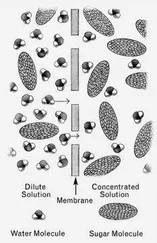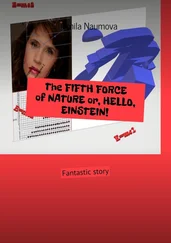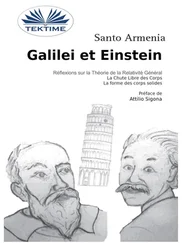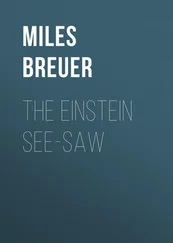“The admiral smiled. He had found his idea and could relax. He had his theme and knew what he was going to say to the students. The principal introduced him, and he began his speech. ‘Ladies and gentlemen,’ he said, ‘you are standing at a doorway through which you are about to pass, into a world where you must make your own way, must accomplish things that will establish the basis for your future lives. I’m going to help you in this by telling you a magic word. This word, if you use it properly, will allow you to go anywhere, do anything, accomplish whatever you want. In my career in the Navy I have used this word many times. It has allowed me to reach my present position…’ He went on in this vein for a long time, describing the things that he had accomplished by using the magic word that he was going to tell them.
“Finally he reached the climax of his talk. ‘I know that by now you are all wondering what this magic word is,’ he said. ‘I will show it to you now. If you will all just turn around and look toward the back of the room, you will find that my magic word is inscribed in large letters on the rear doors of this auditorium.’ The students did as the admiral suggested and turned around. Then they broke into gales of laughter. At the rear of the auditorium, written in very large letters on each door, was the word ‘Pull.’”
Roger laughed. “But that Navy story isn’t fair, I suspect,” he said. “Surely the admiral has considerable skills at leadership and administration.”
“Oh yes,” said George. “And he also has very strong opinions about almost everything and is accustomed to getting his way.”
“I think perhaps I’m beginning to see…” said Roger.
“I’m sure you can,” said George. “Imagine the collision between Watkins and the scientists who are building the SSC. They’re already chafing under all the new DOE project oversight paperwork that’s been laid upon them. The DOE is micromanaging the SSC in a way that was never used at Fermilab or SLAC, and physicists don’t suffer bureaucrats gladly. In our universe, when John Deutsch took over as Secretary of Energy one of his first acts was to streamline and simplify the DOE procedures so that Roy Schwitters, who has just been appointed as SSC director, had more freedom. There were fewer delays in making technical decisions, and the experts were able to focus more effort on the real work of building a technically difficult and demanding accelerator.
“But imagine what will happen when Watkins takes over. He’ll do just the opposite. He’ll want to reshuffle the SSC management completely, put his people in charge, and have them report directly to him. He’ll undoubtedly institute new levels of paperwork and oversight, new chains of command. He has no conception of what’s required for a successful cutting-edge science project, so he’ll run the SSC construction like a Navy shipyard full of crooked contractors.”
The telephone rang, and George answered it. “George Preston,” he said. He listened for a time, then said, “Thank you, General,” and hung up.
“That was one of our Pentagon contacts,” he told Roger. “Tomorrow the Watkins appointment will be announced. We did it.”
“You did it,” said Roger. “Congratulations, George.”
“Two down and one to go,” said George and winked.
“Yes,” said Roger. “There’s just one more key appointment on our agenda: the Science Advisor.”
“The Science Advisor appointment has been going very slowly,” said George, “but we’re making good progress. My contacts inside the Administration have been pushing hard for the idea that we need a Science Advisor from the industrial sector, not an academic. Our leading candidate is George Rathman, the chairman of Amgen. It’s an up-and-coming biotechnology company.”
Roger nodded. “He sounds like a good choice. A biotechnologist isn’t likely to have much enthusiasm for high-energy physics or the SSC. Any progress on mounting congressional opposition to the SSC?”
George nodded. “I’ve been bringing the right people together. I recall from the SSC battles of our previous history that Senator Bumpers of Arkansas and Congressmen Boehlert of New York, Eckart of Ohio, Wolpe of Michigan, and Slattery of Kansas were among the leading opponents of the SSC in Congress. And the most vocal SSC critics in the physics community were Phil Anderson of Princeton, Rustrum Roy of Penn State, and Jim Krumhansl of Cornell. Roy is an organizer of the Science, Technology, and Society movement, Phil has a Nobel prize for theoretical work in condensed matter physics, and Jim’s going to be the president of the American Physical Society this year. That gives them some social cachet, so I’ve been arranging social gatherings at which potential SSC-critic politicians are brought together with potential anti-SSC physicists. I can’t tell how it’s working yet, but I’m told that the other night Krumhansl spent an hour bending Boehlert’s ear.” He smiled.
“The next item on our list is the SSC magnet design,” said Roger.
“Right,” said George. “You’re going to have to carry the ball on that one. We know that the design of the SSC dipole magnets, with their four-centimeter apertures, is marginal. They were close to the hairy edge of operability, as it turned out.”
“Yes,” said Roger. “Since we already know where the problems are with the design, we must find a way of bringing them to light early and making them appear to be major problems instead of minor ones. The SSC design center currently has a personnel shortage, and I’ve identified the temporary agency they’re using to recruit extra physicist-programmers to go over the SSC reference design in more detail. I’ve applied for a temporary position there, using my Roger Hilton persona.”
“Great!” said George. “Give me their address, and I’ll write a couple of letters of recommendation for the good Mr. Hilton, extolling his amazing programming skills and his profound knowledge of accelerator physics.”
“I did that yesterday,” said Roger.
THE SSC DESIGN GROUP OCCUPIED TEMPORARY QUARTERS in a large industrial park in De Soto, Texas, south of Dallas and north of the SSC campus site. The starkness of the building had been softened with paintings and potted plants, but it still had a temporary feel. Removable partitions divided the large open area of the hangarlike structure into small cubicles, each containing a programmer or designer.
Roger Hilton, temporary-hire physicist-programmer attached to the group, sat in his cubicle looking at magnetic field profiles that traced bright colors on the screen of his X-terminal. It was frustrating to have to use this ancient computer hardware. The small lapstation in his backpack had hundreds of times more computing capacity than the entire SSC computer complex here. But nevertheless, he was achieving his goal.
“How’s it going?” asked a soft female voice behind him.
He turned and smiled at Edwina Troy, his boss, and then turned a thumb downward. “I believe we have a serious problem here, Edwina,” he said. “The field of the LBL dipole design looks rather marginal to me. I think they cut a few too many corners to keep the cost down. Look at this multipole expansion of the field. See the red lines? There are big high-multipole components that simply shouldn’t be there. The injected beams are not going to stack properly in the ring.”
Edwina squinted at the screen and looked worried. “We had trouble like that with Energy Doubler dipoles at Fermilab, and we had to make correction magnets to fix the problem. But with a machine of the complexity of the SSC, I’m not sure we can get away with that kind of fix.”
Roger nodded. “I could try variations on the coil geometry, turn spacing and shim placement,” he said. “Those are supposed to have been optimized already, but perhaps it’s worth another go. But if that doesn’t work, the only remedy will be to go to a larger aperture. I think we need five centimeters instead of four.”
Читать дальше











